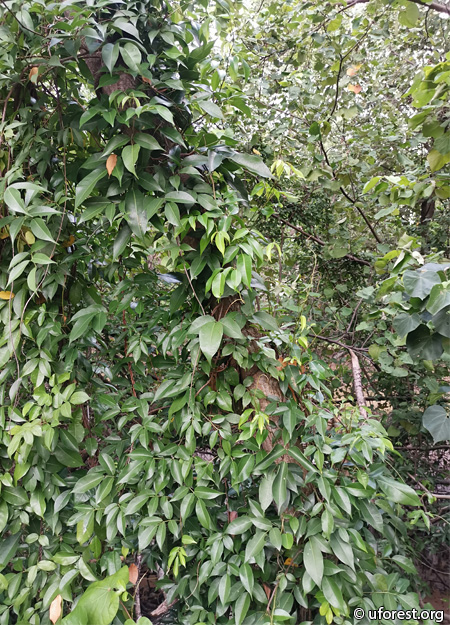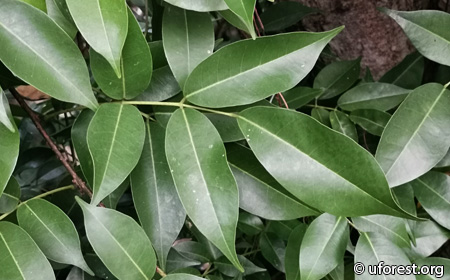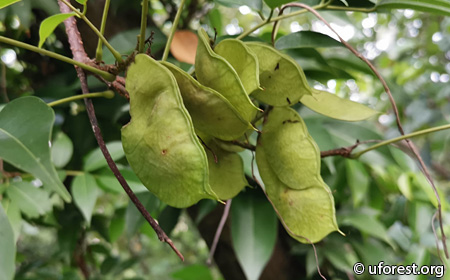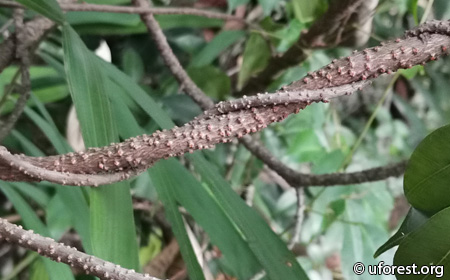Derris trifoliata Lour.
| Etymology | Genus | Leather covering, referring to the tough seed pods |
|---|---|---|
| Species | 3-leafed, referring to the compound leaves, though it can be more than 3 | |
| Family | Fabaceae | |
| Synonyms | - | |
| Common Names | Common Derris, Three-leaf Derris | |
| Status | Native: Common | |
| Form | Climber | |
| Native Distribution | Africa, China down to Indian and Southeast Asia, Australia, Pacific Islands | |
Diagnostics:
Derris trifoliata is a common woody climber found usually at the landward side of mangroves. It has imparipinnate compound leaves, with 3 to 7 leaflets, each being elliptic or ovate. The twining stems are often covered with lenticels.
Interesting Facts:
Derris species are well-documented for their fish stupefying and poisoning properties (Giesen et al., 2006). In Eastern Indonesia, local communities even grow their own varieties of Common Derris with stronger chemical properties to catch fish. The stem is also said to be very durable and used as ropes.

Sprawling Common Derris at Berlayer Creek Mangrove (2020).

Compound leaf.

Leaf underside.

Inflorescence.

Fruits

Lenticels on stem.
References
Giesen W, Wulffraat S, Zieren M & Scholten L (2006) Mangrove guidebook for Southeast Asia. RAP Publication 2006/07. FAO Regional Office for Asia and the Pacific and Wetlands International. Bangkok. 769 pp.
Author: Siyang
Posted: 2020-03-11 / Modified: 2020-03-20